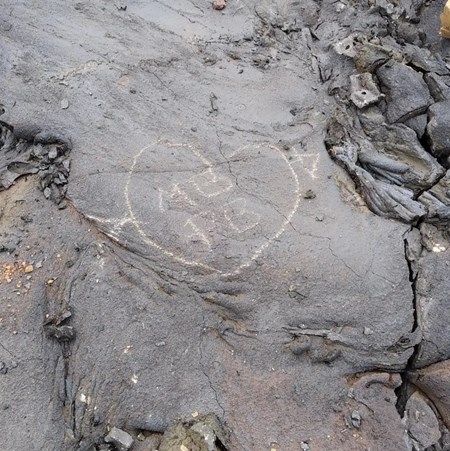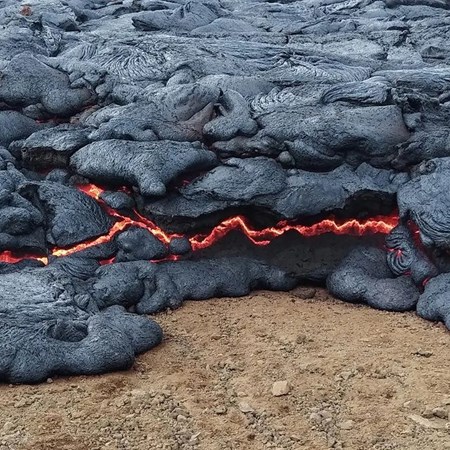Vinna við nýjar heimasíður Umhverfis- og orkustofnunar og Náttúruverndarstofnunar er í gangi. Heimasíða Umhverfisstofnunar er virk á meðan vinnunni stendur. Information in English
Volcanic Sites
On March 19th, 2021, a volcanic eruption started on the Reykjanes peninsula. After being inactive for several months the eruption started again on August 3rd, 2022. The volcanic site has attracted thousands of visitors. Our tasks include protecting the area and monitoring air quality.
 Protecting the Lava
Protecting the Lava
The lava is a unique geological monument that we must respect and protect. Visitors need to leave no trace after their visit.
Please do not:
- throw stones at the lava
- make inscriptions or carvings on the lava
- leave any trash on site
Lavas are under special protection according to art. 61 of the Nature Conservation Act and therefore they must be protected from damages such as trampling, stones, or inscriptions.
.jpg?proc=newsImageV4) Volcanic Gas
Volcanic Gas
During volcanic eruptions gas with effects on human health is released into the atmosphere. These are mainly:
Sulfur Dioxide (SO2)
The most common human health symptoms are eye, throat, and respiratory tract irritation. In high concentrations of SO2 people can experience difficulties in breathing.
Visitors should monitor the concentration of SO2 in the atmosphere. Information and measurements are available on the website for ambient air quality which the Environmental Agency of Iceland operates.
Carbon Dioxide (CO2) and Carbon Monoxide (CO)
When this colorless, odorless gas is emitted from volcanoes it can flow into low-lying areas where it can reach much higher concentrations causing serious risk. This can happen in stable atmospheric conditions.
Ambient air quality monitoring
Air pollution during a volcanic eruption
 Active Volcanoes
Active Volcanoes
Even when no activity can be seen in the crater the eruption is still active. Underneath the hardened top layer of lava burning hot lava can be flowing. The top layer can easily break when stepped on.
Please do not walk on the lava - it is hard to predict where the lava might open or break.
Walking on the lava can also harm geological monuments
Walking route conditions and travel updates from Safe Travel
Park Rangers
The Environmental Protection Agency’s rangers work on the hiking trail of the eruption area and inform and educate visitors on how to enjoy the beauty of nature in harmony with nature conservation in a safe way.
As Geldingadalir is classified as a dangerous area, the Icelandic Civil Protection and the local rescue team also operate in the area.
Access and equipment
The Icelandic Association for Search and Rescue provides information on access to the site, route description, parking information, and what equipment travelers should bring.
General Travel Safety
Iceland offers the traveler an adventure in a spectacular landscape of stunning natural beauty. However, it can also be a harsh and inhospitable environment and it is essential to be cautious and well prepared when traveling, on the volcanic site and elsewhere.